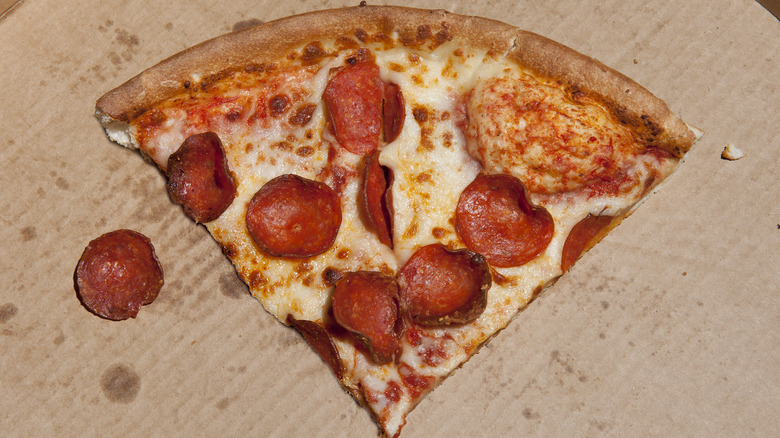How Long Can You Leave Pizza Out On The Counter?
Who among us hasn't woken up the morning after a particularly happening party and found their living space to be less than clean. Half-consumed beverages dot nearly every surface. The sink is piled high with dishes. And one of the pizzas you ordered in the small hours of the morning sits in its greasy box, with but a slice or two taken. You over-ordered as usual.
It's a real shame that the pie has to be thrown away. But wait, does it? You've got no problem eating pizza straight from the fridge; this is just a few degrees warmer, isn't it? Besides, the box was closed, so nothing airborne could have landed on the pizza and started to multiply, right?
The above dilemma has likely plagued humanity since the dawn of pizza, so it's high time we let science weigh in. Can pizza that has been left out be safely consumed, or is it risky to tangle with room-temp 'za.
Welcome to the danger zone
According to the LA Times, your pizza is more than likely now a playground for pathogenic bacteria. While you were sleeping off the party, those bacteria found a happy home among the cheese and sausage, as they're most active at temperatures between 40 and 140 degrees Fahrenheit. Though cooked, the cheese and sausage on your pizza are dairy and meat items. It's safe to say you don't make a habit of consuming milk, yogurt, steak, or sliced turkey that's been sitting out for several hours.
In case you're still not convinced, maybe the USDA can help. That window of temperature mentioned above, 40-140 degrees, is referred to as the "danger zone." To make sure you steer clear of the danger zone, they recommend adhering to the two-hour rule. It states that food that is intended to be served hot — or cold — should only sit at room temperature for two hours before it needs to be disposed of. And for those of you in warmer climes, the rule shortens to one hour when the ambient temperature is above 90 degrees Fahrenheit.
And don't think you can kill off those bad bugs by just throwing your pizza in the microwave. As the University of Nebraska points out, some germs, such as staphylococcus aureus, have the ability to produce a toxin resistant to heat that can lead to foodborne illness.

